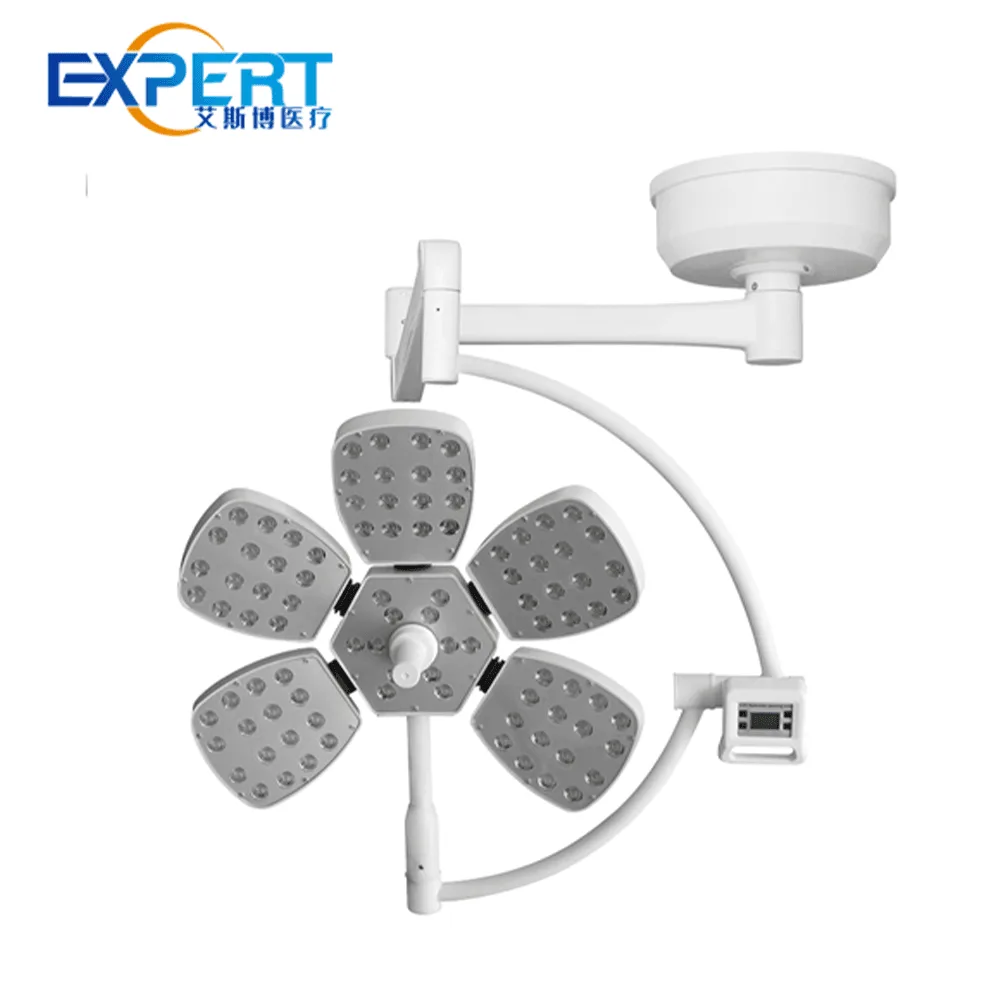Indirizzo
304 Il cardinale nord S.
Dorchester Center, MA 02124
Ore di lavoro
Dal lunedì al venerdì: 7:00 - 19:00
Fine settimana: 10:00 - 17:00
Benvenuti nel mio blog!
Prima di immergerci nei contenuti, mi piacerebbe che ti unissi a me sulle mie piattaforme social, dove condivido altre intuizioni, interagisco con la community e pubblico aggiornamenti. Ecco come puoi metterti in contatto con me:
Facebook:https://www.facebook.com/profile.php?id=100071234835011
LinkedIn:https://www.linkedin.com/company/74943205/admin/dashboard/
YouTube:www.youtube.com/@shandongexpertmedicalequip4695
TikTok:www.tiktok.com/@expertmedical
Ora, iniziamo il nostro viaggio insieme. Spero che tu trovi il contenuto qui perspicace, coinvolgente e prezioso.

A well-equipped medical clinic hinges on reliable and precise lighting solutions. Among the myriad of tools in an operating environment, the surgery light plays a pivotal role in ensuring that surgeons and clinical staff have optimal visibility. This comprehensive guide will walk you through every aspect of selecting the ideal surgery light for your facility, from technical specifications and installation considerations to maintenance and cost planning. By the end of this article, you will have a clear understanding of how to choose a surgery light that enhances procedural efficiency, patient safety, and long-term clinic performance.
Investing in a high-quality surgery light delivers multiple benefits:
A subpar surgery light can compromise outcomes, increase fatigue, and incur higher lifecycle costs. Understanding the importance of key lighting attributes ensures that your purchase aligns with clinical demands without exceeding the keyword budget for this guide.

Surgery light options have evolved significantly over the past decades. Today’s primary categories include:
Ceiling-mounted models offer permanent fixture benefits—stable positioning, centralized control, and minimal footprint. Ideal for high-volume operating theaters, these lights often come with multiple arm joints for effortless maneuvering.
Wall-mounted units serve as a cost-effective alternative for smaller procedure rooms. They save ceiling real estate but may offer less flexibility in angling compared to ceiling-mounted options.
On wheels, mobile surgery lights provide versatility across various clinic rooms. They are especially useful for outpatient facilities or clinics with limited procedure room space. However, ensure the chosen model maintains consistent illumination as it moves.
Some advanced setups integrate both ceiling-mounted and mobile units, offering redundancy and maximum adaptability. While more expensive, hybrid systems can significantly reduce scheduling conflicts in busy clinics.
When evaluating any surgery light, focus on several technical and ergonomic factors:
CRI indicates a light’s ability to reveal true tissue colors. A high CRI (above 90) ensures that subtle shades of red, blue, and yellow appear accurately, which is critical for identifying anatomical structures.
Different procedures require variable field sizes. Look for surgery lights that let you adjust the light field diameter (typically from 10 cm to 30 cm) without sacrificing intensity.
Excessive heat can dry tissues and cause discomfort for both patient and staff. Modern models employ LED technology or advanced reflector systems to reduce heat emission while maintaining high brightness.
Multiple light sources or concentric LED arrays help to dilute shadows caused by surgeons’ hands or instruments, ensuring uniform illumination.
Energy consumption and maintenance needs directly impact operating costs over a unit’s life cycle. Key points include:
Planning for regular preventive maintenance can extend service life and prevent sudden failures during critical procedures.
Consider your clinic’s workflow when choosing between fixed fixtures and mobile models:
| Caratteristica | Fixed Ceiling-Mounted | Mobile Unit |
|---|---|---|
| Flessibilità | Moderate (arm joints) | High (wheels + handles) |
| Footprint | Minimo | Occupies floor space |
| Costo iniziale | Più alto | Inferiore |
| Maintenance Access | Requires ladders/scaffolding | Ground-level access |
| Backup Redundancy | May need separate mobile unit | Easily redeployed |

Budget constraints often dictate the range of options you can consider. When calculating total cost of ownership, include:
By conducting a comprehensive cost-benefit analysis, clinics can secure financing for units that balance upfront investment with lower long-term expenses.
Installing a surgery light involves more than hanging it from the ceiling. Key compliance and safety checkpoints include:
Preventive maintenance maximizes uptime and extends service life:
A clear maintenance log also assists with accreditation and audit readiness.

Beyond technical specifications, the surgery light must promote operator comfort and patient safety:
Selezionando il diritto surgery light is an investment in clinical excellence, patient safety, and operational efficiency. By considering factors such as illuminance, CRI, energy consumption, and maintenance needs, you can choose a solution that meets both your procedural requirements and budget constraints. Ready to upgrade your facility’s lighting? Contattaci today to discuss your requirements and receive a customized recommendation for the ideal surgery light.
What is the ideal illuminance level for a surgery light?
Most procedures demand between 80,000 and 120,000 lux at the focal plane. Pediatric or microsurgeries may require upwards of 160,000 lux.
How often should I replace the bulbs or LEDs?
Halogen bulbs typically last between 1,000 and 2,000 hours, whereas LEDs can exceed 50,000 hours. Always follow the manufacturer’s maintenance schedule.
Sono mobili surgery light units as reliable as ceiling-mounted ones?
Modern mobile units offer comparable illumination performance, provided they feature robust stabilization and high-capacity power supplies.
